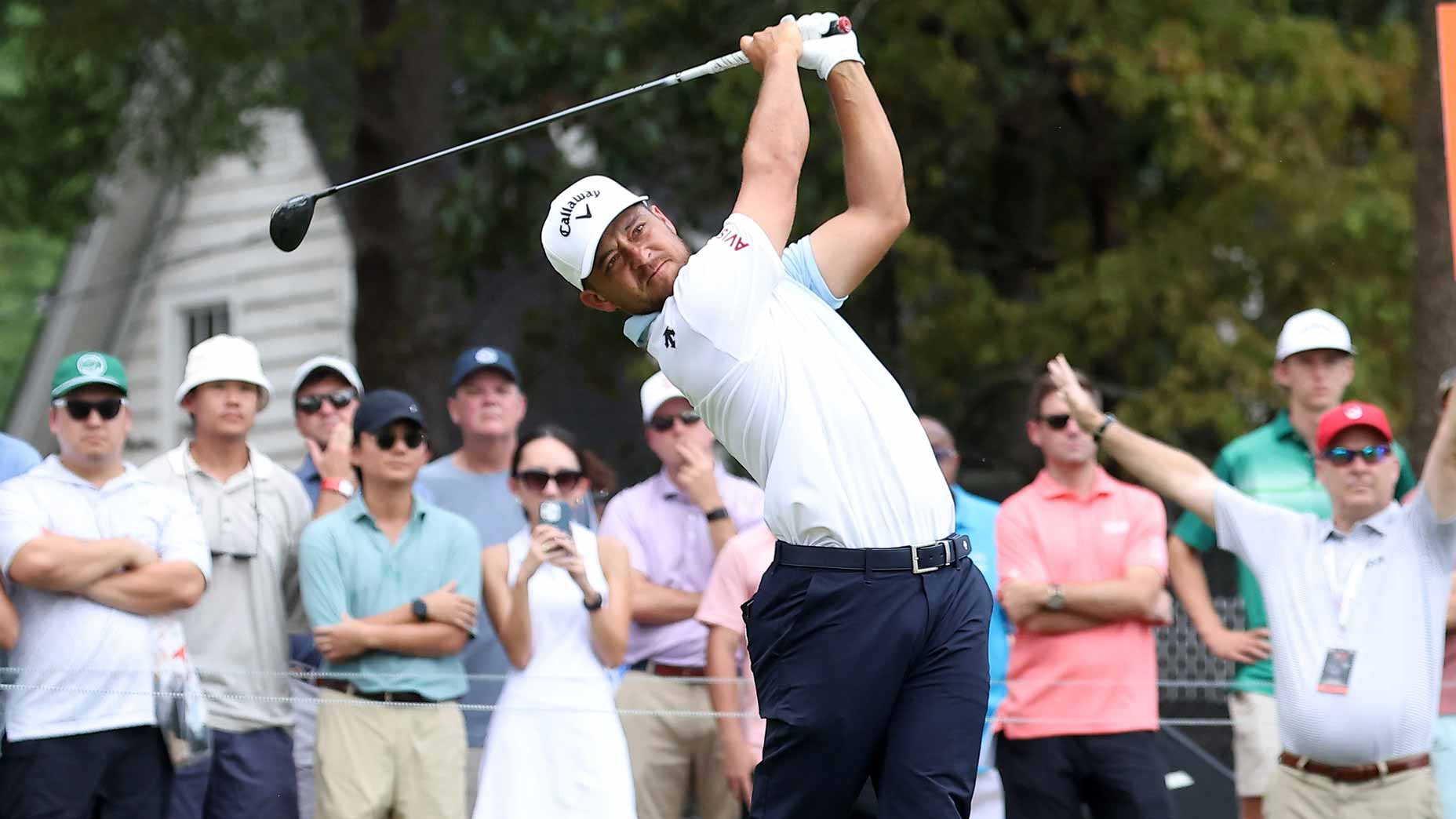 ‘It depends’: Wyndham Clark says only certain LIV stars should be allowed back to Tour
‘It depends’: Wyndham Clark says only certain LIV stars should be allowed back to Tour
With caddie scholarship programs, we can shoulder the needs of those who carry our bags
The caddies who become famous do more than carry their player’s bag. They advise, counsel, challenge decisions and, in the best moments, celebrate in victory with their player. Carl Jackson enveloping Ben Crenshaw in a victory embrace on Augusta National’s 18th green. Stevie Williams, arms pumping, as charged up as Tiger Woods, whose bag he carried for 13 of his 15 major titles. Michael Greller, the math teacher turned Jordan Spieth confidant, laughing with his player like two guys enjoying a round of golf — even if he occasionally gets yelled at like any long-suffering partner.
But at many golf clubs that maintain caddie programs, the loopers look a bit different: shorter, scrawnier, less savvy but hopefully inquisitive and friendly. That’s because most club caddies, particularly in the peak summer months, are drawn from the ranks of local high school and college kids. And for good reason. The club needs strong, seasonal workers. For the young caddie, it’s a pretty good summer gig: You get to work outside, earn cash, meet people who might one day help you land an internship or job. Plus, if your boss is a jerk, you get a new one the next day.
But member and looper have helped each other in a more long-lasting way for the past century, in the form of scholarship money. National caddie scholarship funds, combined with thousands of individual club programs, now award tens of millions of dollars each year to boys and girls who work at golf courses. The fall is the time to apply. The impact is meaningful. The Evans Scholars Program, the granddaddy of caddie scholarships, last year awarded $24 million in full scholarships and housing at 18 colleges to 985 caddies. Some $14 million of that comes from Evans alums giving back, with another $10 million from 34,000 golfers making small donations.
Such generosity has a long tradition. Chick Evans, onetime Chicago caddie and famed amateur golfer, dreamed up the scholarship that carries his name in 1916, after winning the U.S. Open and the U.S. Amateur that year. As a student he had been forced to withdraw from Northwestern University for lack of money. Being a new idea, it took time. The first two scholarships were not handed out until 1930. Ninety years later, nearly 11,000 caddies — and only caddies — have gone to college for free on an Evans Scholarship.
ADVERTISEMENT
These scholarships are close to my heart. In 1991, I was fortunate to receive a caddie scholarship for college. I had been working in the pro shop of the Country Club of Wilbraham in Massachusetts since I was 15 and needed near full financial aid to pay for college. Of all the awards I received, the most memorable was a Francis Ouimet Caddie Scholarship, named for the 20-year-old Boston amateur who won the 1913 U.S. Open at Brookline by beating the two best golfers of his day. The fund’s image shows Ouimet striding down the fairway, with his caddie Eddie Lowery, then 10, walking beside him. Both men started as caddies. Neither went to college, but they turned their renown in golf into successful business careers — with Lowery becoming incredibly wealthy and famous in golf.
At a time when carts are prevalent, caddies continue to thrive, and so, too, do the scholarship dollars that go to them — and, often, their colleagues in the pro shop and the bag room. “The number of applications goes up each year,” says Jeff Harrison, senior vice president of education at the Evans Scholarship and an alumnus of the program. “The need for caddies wanting to go to college is as great as it’s ever been.”
The Westchester Golf Association’s caddie scholarship program was started in 1956 by Willie Turnessa, a great amateur, and Udo Reinach, a member of Quaker Ridge in Mamaroneck, N.Y. That first year they were oversubscribed — with 10 qualified applicants and money for just one or two. A local golfer, Sally Francis, stepped up to raise the rest of the money. Last year, the fund awarded $1.1 million.
“It’s interesting to see how this is still relevant at a time when caddying has seen a shift to pro caddies or no caddies,” says Johanna Galvin, the organization’s senior director of caddie scholarship funds. What the Ouimet offers today is a lot more money than in my day — I received $1,500 each year of college; the top annual award today is close to $40,000, with an average of $7,000. But what is at the heart of any caddie scholarship — helping kids who couldn’t otherwise afford to go to college — has persisted.
While the Ouimet fund continues to receive support from some of the state’s storied clubs, Bob Donovan, executive director of the fund, says it now awards about two dozen scholarships to kids working at Boston’s two inner-city municipal courses. “Those clubs don’t give us anything, but there are people who see golf as a way to give back to society beyond golf,” he says. That approach may help the next Eddie Lowery.
Paul Sullivan is a longtime business columnist for the New York Times and the author of Clutch: Why Some People Excel Under Pressure and Others Don’t.
ADVERTISEMENT






